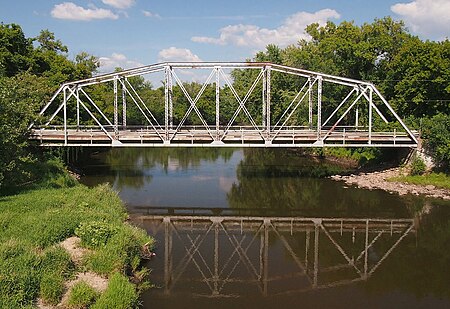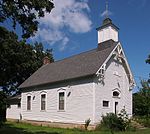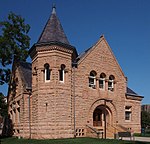Waterford Bridge

The Waterford Bridge, formerly designated Bridge L0327 and now Bridge L3275, is a historic steel truss bridge over the Cannon River in Waterford Township, Minnesota, United States. It was constructed in 1909 and is one of the state's earliest surviving bridges to use rigid rather than pinned connections. Moreover, it is Minnesota's only known road bridge in which some of the rigid connections are fastened with bolts rather than rivets.The bridge was listed on the National Register of Historic Places in 2010 for having state-level significance in the theme of engineering. It was nominated for being a rare surviving example of Minnesota's once-common camelback through truss bridges, and for its early and uniquely transitional rigid connections.
Excerpt from the Wikipedia article Waterford Bridge (License: CC BY-SA 3.0, Authors, Images).Waterford Bridge
Waterford Bridge, Waterford Township
Geographical coordinates (GPS) Address External links Nearby Places Show on map
Geographical coordinates (GPS)
| Latitude | Longitude |
|---|---|
| N 44.4875 ° | E -93.128472222222 ° |
Address
Waterford Bridge
Waterford Bridge
Waterford Township
Minnesota, United States
Open on Google Maps




